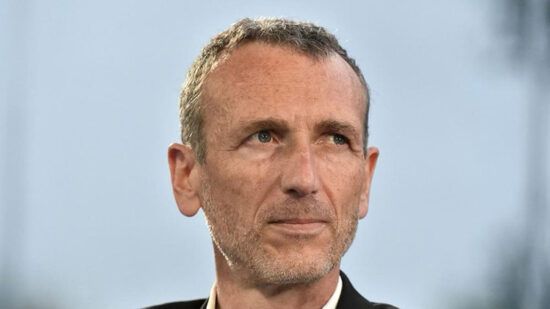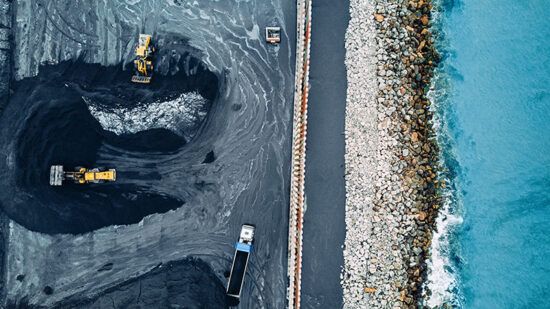The circular revolution is here even if current headlines do not seem to reflect this, yet.
It’s true that less than 10% of the world’s resources are properly circular with nearly every industry deficient when it comes to circular practices.
According to analysis from Berenberg, 71% of plastics are mismanaged and landfilled globally, while 30% of food is wasted, representing 8% of global emissions.
Creating a circular economy is therefore more than just about “responsible consumption and production” – Goal 12 of the Sustainable Development Goals (SDGs) – it is of critical importance for tackling climate change.
Fortunately, we are beginning to see the seeds of a circular revolution being sown. Policy is finally starting to step up and innovation is offering solutions beyond the simple reduce, reuse and recycle model. This is creating a deeper growth opportunity for investors, with some estimates expecting the theme to see investment of $4.5trn by 2030.
Why are we still hooked on a ‘take, make, dispose’ economy?
In a similar way to tackling climate change, policymakers have long embarked on ‘can-kicking’ initiatives, deferring the challenging and immediate action required to bring about long-term change.
The fact that waste largely remains a poorly costed economic externality hasn’t helped. In many countries it remains too simple and cheap to send waste to landfill (or to incinerators) than change the status quo. This is particularly evident in countries such as the US where landfill capacity remains abundant, creating little incentive to recycle.
And for too long Western governments were able to export the problem overseas. When China banned the import of waste in 2018 under its National Sword policy, it effectively forced the hand of the West. Landfill and incineration rates ballooned as local governments lacked the infrastructure to deal with the sea of waste that remained onshore. But it also proved to be a wake-up call, heralding change with businesses seeking to produce easily recyclable packaging and policymakers taking a sharper focus on reducing single-use plastics.
While a number of export bans have been introduced, many countries in the Global North still export unsorted recycling to the Global South, including textiles that are typically cheapest to produce, are a key source of microplastics, and are among the most challenging forms of waste to recycle.
The drivers of circular change
Increasingly, businesses are recognising that circularity starts with the design stage of a product. However, such is the inertia and “lock-in” in the current linear economic model, the circular transition still requires massive policy support and long-term investment to update or replace legacy systems.
With an estimated 1,100 regulations now in play globally, we are encouraged to see a strong incentive framework coming into place. Of these policies, some 339 regulations are spread across 44 countries in Europe, with the UK and US catching up.
The UK government, for example, introduced the plastic packaging tax on 1 April 2022, which imposes a £200 per tonne levy on plastic packaging with less than 30% recycled content, whether manufactured locally or imported into the UK.
In the US, meanwhile, America’s Plastic Makers, a division of the American Chemistry Council, have committed to helping achieve a circular economy for plastics with two ambitious goals: “100% of plastic packaging to be recyclable or recoverable by 2030”, and “100% of plastic packaging to be reused, recycled or recovered by 2040”.
Australia is also catching up and has embarked on an ambitious seven-point plan, which includes a ban on waste exports (already enacted), the phase out of “problematic and unnecessary plastics” (i.e. single use plastics) by 2025 and a recovery rate of 80% from all waste streams by 2030.
Innovative thinking
Creating scalable, cost-competitive circular solutions requires innovative thinking and R&D. Berenberg has highlighted four key areas of innovation when it comes to the circular economy: “digitalisation – smarter design and manufacturing of goods”, “efficient food production and processing”, “remanufacturing within industrial sectors” and “advanced recycling for plastics and textiles”.
It is important to identify secular growth opportunities, particularly those that contribute to a Just Transition through the creation of good green jobs. With that in mind, the International Labour Organisation (ILO) forecasts an additional six million jobs globally as a result of a transition to a circular economy. These will be in areas such as “recycling, repair, rent and re-manufacture” which will replace the current model of “extracting, making, using and disposing.”
Nevertheless, we are also mindful that decoupling the linear relationship between material production and growth remains hugely challenging. Solving this problem isn’t just about technology. It’s also about a shift in mindset and setting a higher threshold in terms of a product’s viability, longevity and ability to be repurposed and recycled. We are encouraged by the shift in thinking we are seeing first-hand during our conversations with companies, as well as the broader move to look beyond the ‘3R model that is helping to push the global economy in a more circular direction.








